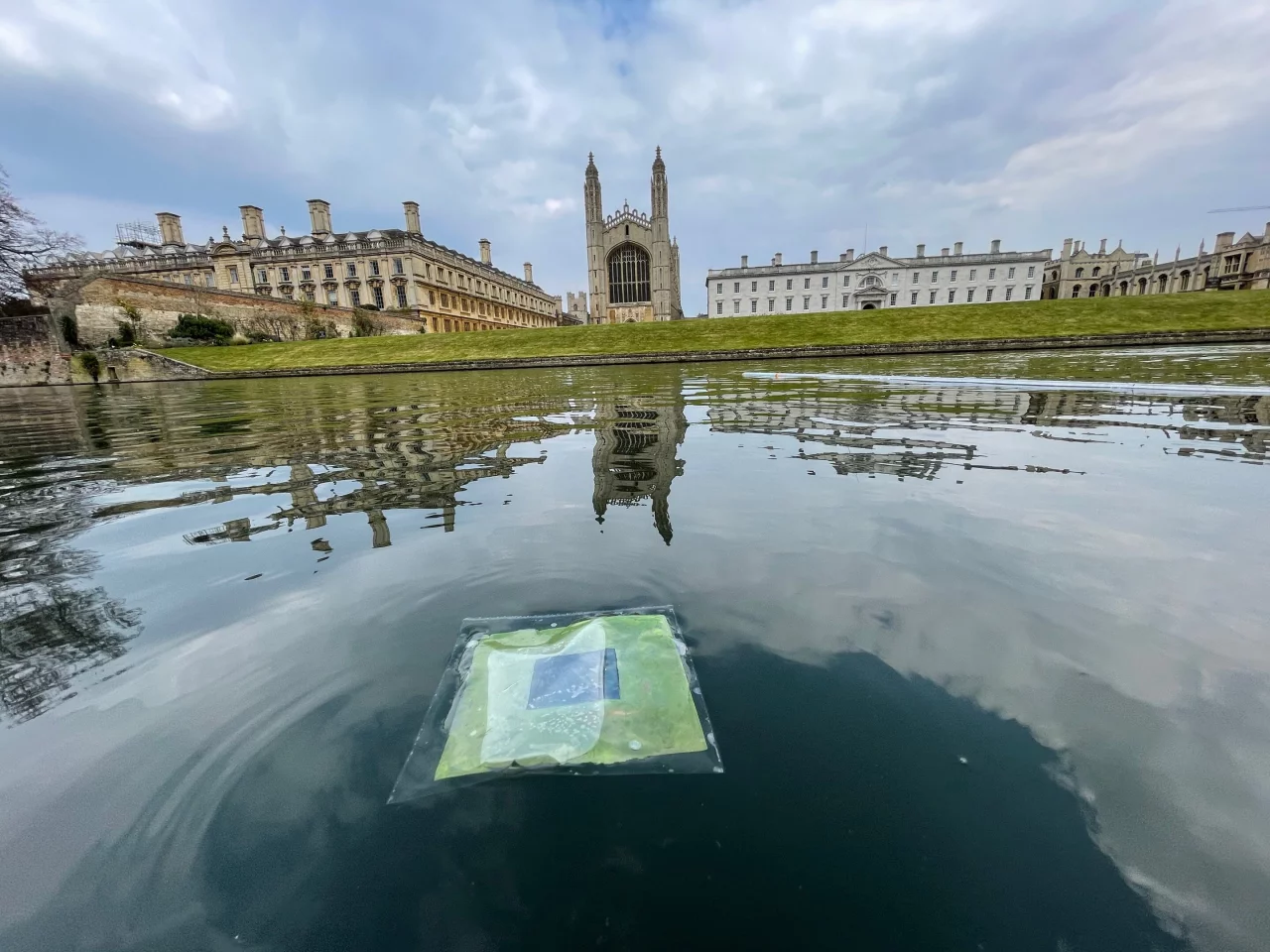The leaf is one of nature’s most impressive little machines, able to convert sunlight, carbon dioxide and water into energy. Scientists at Cambridge have now created a type of artificial leaf that can float on water, tapping into sunlight above it and water below it to produce fuels as efficiently as the real thing.
The new study builds on the team’s previous design for an artificial leaf that used two perovskite light absorbers paired with a cobalt catalyst, and would take water and carbon dioxide in to make oxygen, hydrogen and carbon monoxide. The latter products two could then be captured and used to make synthetic gas (syngas), a key ingredient in plastics, fertilizers and fuels like diesel, essentially helping reduce the CO2 footprint of those products.
But the earlier design was rather bulky, with thick glass and other materials that made it a freestanding device. For the new study, the researchers wanted to slim it down, to the point that it was light enough to float on water, without losing its efficiency.
To do so, the team deposited perovskite light-absorbing layers onto thin, flexible layers of polyester coated in indium tin oxide, and used a platinum catalyst. These were then covered with ultra-thin carbon-based materials that repelled water, to protect the devices against moisture damage.

The end result was an artificial leaf that could float on the water’s surface, either splitting that water into hydrogen and oxygen or producing the ingredients for syngas. Testing the devices on nearby waterways, the team showed that per gram, the output was comparable to natural leaves – 0.58% for hydrogen and 0.053% for carbon monoxide. Those numbers might not sound like much, but they’re huge improvements over the previous iteration.
The floating artificial leaves are scalable too, with tests being conducted on versions from 1.7 cm2 (0.3 in2) up to 100 cm2 (15.5 in2), with performances that scaled with it. The team says the devices could be used to generate cleaner fuels essentially anywhere there’s water, including polluted waterways or in the open sea.
The research was published in the journal Nature.
Source: University of Cambridge





